A terrarium is a charming miniature representation of an ecosystem.
If you’re eager to bring a touch of nature into your living space, consider creating a terrarium landscape to infuse your environment with earthy vibes.
In recent years, terrariums have become popular as decorative elements or crafts for home accessorizing.
Many plant enthusiasts incorporate them into decor to add a natural essence to their interiors.
Choosing a terrarium is a fantastic option.
However, if you’re curious about the care these delicate ecosystems require, particularly their watering needs, explore our guide to terrarium care.
This article will provide essential tips for properly watering small terrarium plants.
Let’s get started.
What Type of Water is Suitable for Terrarium Plants
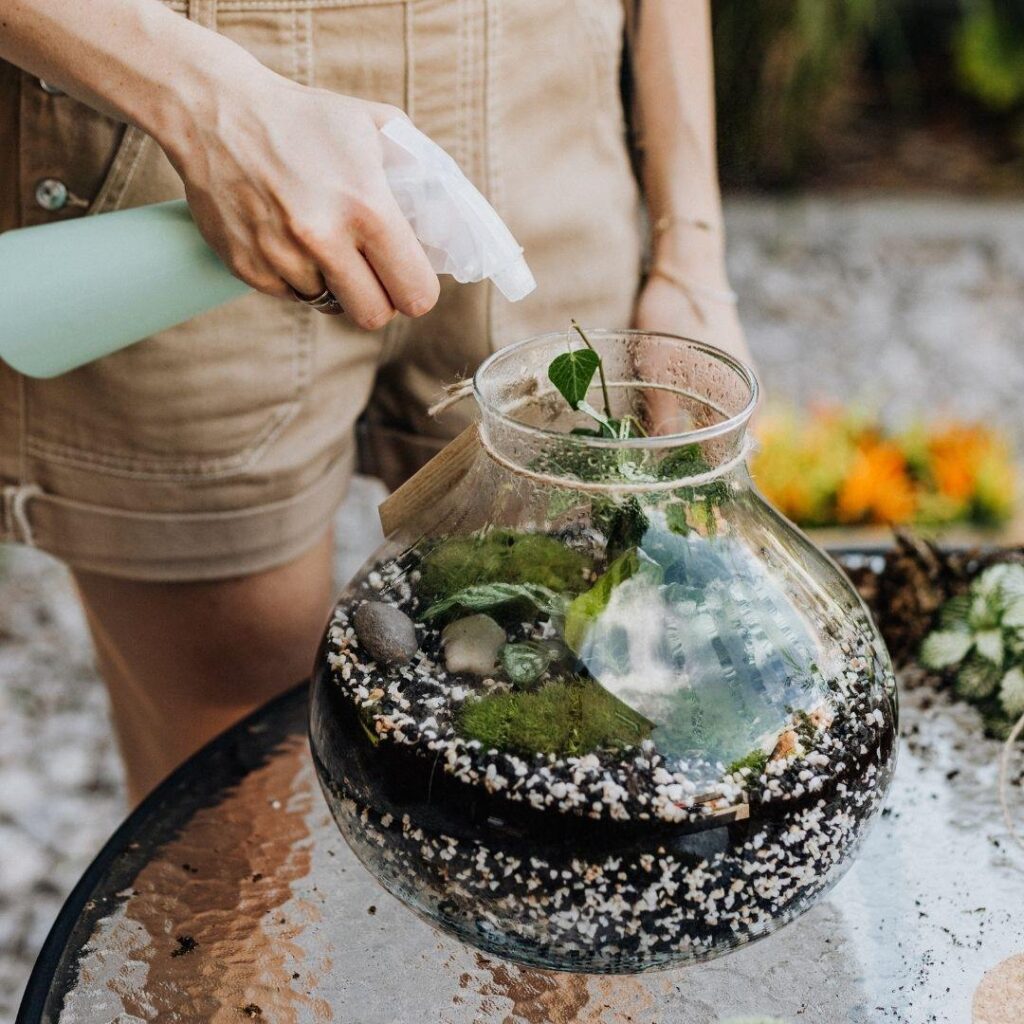
Proper watering is very important to encourage the vital growth of terrarium plants.
Terrariums are basically a closed ecosystem with natural water drainage absent.
Hence, a man-made water drainage solution was constructed to ensure adequate moisture for the plants to thrive.
However, in this case, it becomes necessary to add the right type of water with the right number of watering cycles.
If this watering task is not conducted as it requires, the terrarium plants will not last longer.
Here, we have shared what kind of water benefits these closed ecosystem plants.
- Distilled water
- Tap water (Chlorine free)
- RO or filtered water
- Bottled water
- Rainwater ( if the watering frequency is less)
Is Soft Water Harmful for Terrarium Plants?
It might be tricky to answer this question because it depends on the watering frequency.
Though terrarium plants are not likely to require daily watering, some plant species need a little more.
However, soft water can be harmful to those plants due to its high sodium content and mineral ions absence.
Plants will likely require less watering, but these terrarium plants can sustain well with soft water.
However, most horticultural experts won’t recommend soft water for terrarium plants.
What is the Correct Way to Water Terrarium Plants?
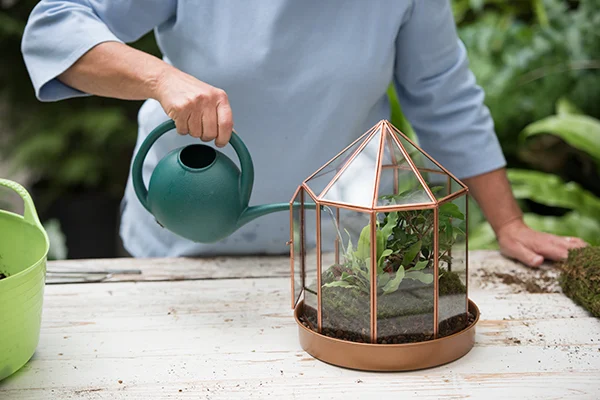
Terrarium plants’ watering necessities differ from those of other indoor plants as they don’t have water-draining holes or natural drainage systems.
In addition, their growth occurs in closed environments, such as different glass jars with lids.
Hence, they consume less water to survive and grow in the same environment.
The following tips will be useful to make it easier to understand the proper watering process for terrarium plants.
- The terrarium plant propagation system is structured with layers. For instance, the drainage layer (using porous stones to soak the access water) is at the bottom, then the substrate (soil mixture) and moss layer are on the substrate with certain decorative elements like pebbles, stones, etc. On these crafted layers, small plants are cultivated. There is no sure-shot drain hole available in these layers. Hence, minimal watering will work best.
- Spray bottles or droppers will be appropriate tools for watering these plants, as controlling the water supply will be easier.
- When watering the fresh terrarium plants, supply water only to the little moisturizing of the substrate layer.
- Some soil mixtures or substrates are dry, whereas some are wet. In these cases, the dry substrate consumes more water than the wet one.
- After watering the terrarium, close the lead and wait 24 hours. Check the jar; if you notice dampness and proper moisture added to the terrarium substrate layer, it will be counted as perfect watering.
- Always monitor the progress of the terrarium after watering. If the terrarium layers show extra dryness, spray the plants with mild water.
- Matured terrarium plants will not need frequent watering.
- Terrarium jars are also an important aspect that can affect watering functions. For example, if the jar lid is not airtight, these terrariums consume extra water. On the other hand, jars or containers with airtight lids consume less water as they are sealed tightly, where water evaporation will happen.
- Fix the watered terrarium by wiping out the condensation with the help of tissues, and let the terrarium rest for at least two hours without a lid. It will evaporate the water from the jar. Monitor whether the idea is working or not. Repeating the process if the same happens even after 10 to 12 hours.
The above tips are an essential part of terrarium maintenance, and they will smoothen the execution of plant propagation.
Conclusion
The terrarium concept is the ultimate way to start enjoying indoor planting.
It combines the best of both worlds: creative planting and the addition of nature in a compact form.
However, many aspects of this terrarium concept are neglected, leading to an unsuccessful trial.
We have tried to explain those neglected factors in this article.
A major factor in terrarium watering is the type of water that is good for terrarium plants.
We have also shared tips on how to water these fragile ecosystems properly.
The information in this article will be a great guide to clearing up many of your doubts regarding the propagation of terrarium plants.

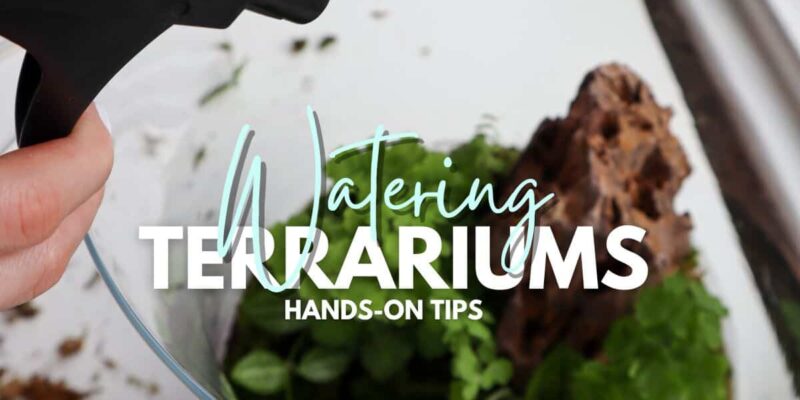



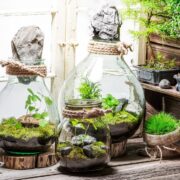
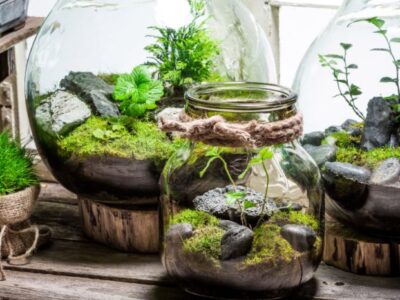

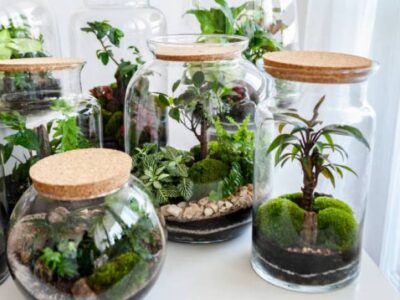

Comments